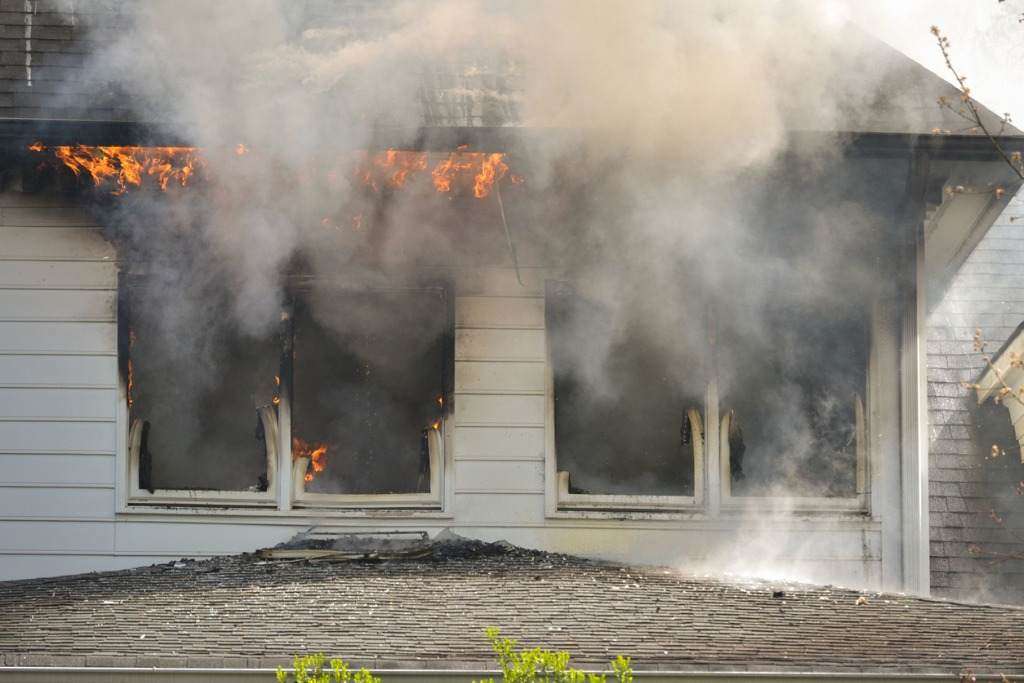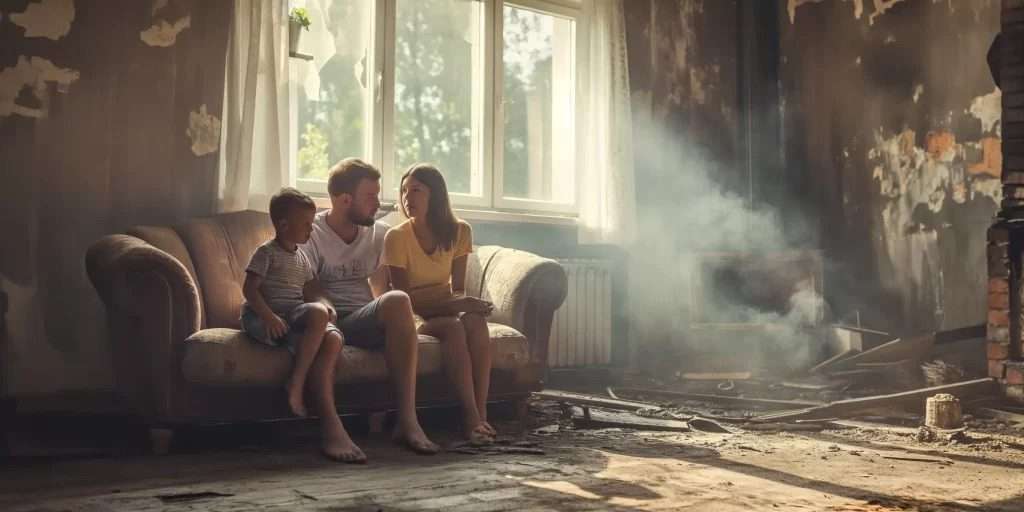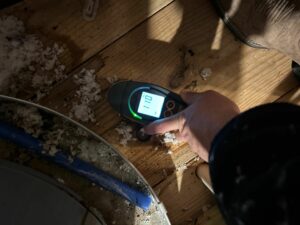Blogs
What are the health risks of fire and smoke damage in Plano?

When fire strikes in Plano, the aftermath isn’t just about property damage—it can seriously affect your health too. Intensa Dry, it’s more than just the visible damage. Smoke carries toxic particles that can irritate your eyes, throat, and lungs, triggering respiratory issues like coughing and shortness of breath. Prolonged exposure to smoke can lead to more severe conditions, even long-term lung damage. The lingering odor from smoke can also cause discomfort and exacerbate existing health conditions. That’s why addressing fire and smoke damage promptly, including using products like Intensa Dry, is crucial for both safety and health.
Understanding the Risks
1. Immediate Effects of Smoke Inhalation

Immediate effects of smoke inhalation include respiratory irritation, eye discomfort, and headaches, impacting health significantly. Smoke damage affects homes in Plano by permeating walls and furniture with odors and residues, damaging electronics, and tarnishing surfaces. These issues require prompt cleaning and restoration to prevent long-term health risks and property damage.
Smoke from fires contains a complex mixture of gases and fine particles that can be extremely harmful when inhaled. The immediate effects of smoke inhalation can vary depending on factors such as the type of materials burning, the duration of exposure, and individual health conditions.
Respiratory Irritation:
One of the most common and immediate effects of inhaling smoke is irritation to the respiratory system. This can manifest as coughing, wheezing, shortness of breath, and sore throat. The smoke particles irritate the lining of the respiratory tract, causing inflammation and discomfort.
Eye Irritation:
Smoke exposure can also lead to irritation of the eyes, causing redness, itching, and tearing. This is due to the irritating gases and particles that come into contact with sensitive eye tissues.
Headaches and Dizziness:
Inhalation of smoke can cause headaches, dizziness, and nausea, particularly in enclosed spaces where smoke concentration is higher. These symptoms often result from the decreased oxygen levels and increased carbon monoxide in the air.
2. Health Risks Over Time
While the immediate effects of smoke inhalation are concerning, the long-term health risks are equally significant and can develop over time, especially with prolonged exposure or repeated incidents.
Chronic Respiratory Issues:
Continued exposure to smoke, even at lower levels, can lead to chronic respiratory conditions. These may include chronic bronchitis, asthma, and in severe cases, chronic obstructive pulmonary disease (COPD). The particles from smoke can damage lung tissues and impair lung function over time.
Cardiovascular Effects:
Smoke inhalation is also associated with an increased risk of cardiovascular problems. Fine particulate matter in smoke can enter the bloodstream through the lungs, triggering inflammation and potentially leading to cardiovascular diseases such as heart attacks and strokes.
Long-term Lung Damage:
The toxins in smoke can cause long-term damage to the lungs, reducing their ability to function effectively. This can result in decreased lung capacity and increased susceptibility to respiratory infections.
3. Specific Risks from Fire Damage
Specific risks from fire damage include exposure to toxic gases and chemicals released during combustion, which can lead to respiratory problems and other health issues. Fire damage restoration involves assessing structural integrity, removing debris, and cleaning surfaces to eliminate smoke residues and odors. Professional restoration services ensure thorough cleanup and repair to mitigate health risks and restore the property’s safety and functionality.
Beyond the general risks associated with smoke inhalation, specific types of fires and materials burned can pose additional health concerns:
Chemical Exposure:
Fires involving synthetic materials, plastics, and electronics can release toxic chemicals when they burn. These chemicals include volatile organic compounds (VOCs), dioxins, and heavy metals, which can have serious health effects even in small amounts.
Asbestos Exposure:
In older buildings, fire can disturb asbestos-containing materials, releasing asbestos fibers into the air. Inhalation of asbestos fibers is known to cause lung cancer, mesothelioma, and other serious respiratory diseases.
Carbon Monoxide Poisoning:
Carbon monoxide (CO) is a colorless, odorless gas produced by incomplete combustion of carbon-containing materials. It can be deadly in high concentrations, leading to symptoms such as headache, dizziness, confusion, and eventually unconsciousness or death if exposure continues.
Mitigating Health Risks

Mitigating health risks through fire damage restoration involves promptly assessing and addressing structural damage to prevent hazards like collapses or electrical dangers. Thorough cleaning of smoke residues and airborne contaminants helps eliminate health risks associated with prolonged exposure. Restoration professionals ensure comprehensive cleanup and sanitization, including using specialized equipment and techniques to restore indoor air quality. This proactive approach not only safeguards against immediate health threats but also promotes a safer environment for long-term occupancy after fire damage.
1. Immediate Response and Evacuation
During and immediately after a fire, prompt evacuation and limiting exposure to smoke are crucial to minimizing health risks. Staying low to the ground where the air is clearer and using wet cloths to cover the nose and mouth can help reduce inhalation of smoke particles.
2. Seeking Medical Attention
Seeking medical attention after fire damage is crucial for assessing and managing any health impacts from smoke inhalation or injuries. Intensa Dry ensures thorough cleaning and sanitization by absorbing moisture and odors, effectively removing residues left by smoke. Its advanced technology helps prevent mold growth and restores indoor air quality by neutralizing odors, promoting a safer and healthier environment post-fire. This comprehensive approach ensures that both visible and invisible traces of smoke damage are addressed efficiently.
Anyone exposed to significant amounts of smoke, especially those experiencing symptoms such as difficulty breathing, chest pain, or severe headaches, should seek medical attention promptly. Medical professionals can assess the extent of smoke inhalation and provide necessary treatment.
3. Cleaning and Remediation
After a fire, thorough cleaning and remediation of affected areas are essential to removing smoke residues and preventing ongoing health risks:
Air Filtration and Ventilation:
Using air purifiers with HEPA filters can help remove smoke particles from indoor air. Proper ventilation of the space is also crucial to clear out residual smoke.
Cleaning Surfaces:
Surfaces and items exposed to smoke should be cleaned thoroughly to remove soot and residue. Professional cleaning services may be necessary to ensure thorough removal of contaminants.
Replacing Damaged Materials:
In cases where materials have been extensively damaged or contaminated by smoke, replacing them may be necessary to eliminate health risks.
4. Addressing Long-term Health Concerns
For individuals with pre-existing respiratory conditions or those exposed to smoke over extended periods, ongoing monitoring of lung function and health by medical professionals is important. Early detection and management of respiratory symptoms can help mitigate long-term health consequences.
FAQs
What are the health risks associated with fire damage?
Fire damage poses significant health risks including smoke inhalation leading to respiratory irritation, potential long-term lung damage, and increased risk of cardiovascular diseases due to exposure to toxic gases and fine particles. Additionally, fires involving certain materials like plastics or electronics can release harmful chemicals such as volatile organic compounds (VOCs) and heavy metals, exacerbating health concerns. Prompt evacuation, medical attention for smoke inhalation symptoms, and thorough cleaning and remediation of affected areas are crucial to mitigating these risks.
Is smoke damage bad for your health?
Yes, smoke damage can be very bad for your health. Inhaling smoke particles can cause immediate respiratory irritation, leading to coughing, sore throat, and difficulty breathing. Prolonged exposure to smoke can also result in long-term lung damage, increased risk of respiratory diseases, and exacerbation of existing health conditions. Taking swift action to mitigate smoke exposure and clean affected areas is crucial for minimizing health risks after a fire.
What are the dangers of fire smoke?
Fire smoke contains harmful gases and fine particles that pose immediate and long-term health risks. Immediate dangers include respiratory irritation, eye irritation, and exacerbation of cardiovascular conditions due to carbon monoxide exposure. Long-term risks include chronic respiratory diseases and potential damage to lung tissues from prolonged exposure to smoke toxins.
What are the damages of fire smoke?
The damages caused by fire smoke are multifaceted and extend beyond visible property destruction. Smoke can permeate walls, furniture, and personal belongings, leaving behind lingering odors and residues that are difficult to remove. It can also corrode metals, tarnish surfaces, and compromise structural integrity, necessitating extensive cleaning, restoration, and sometimes replacement of affected items to mitigate long-term damage.
What could be damaged due to fire and smoke?
Fire and smoke can damage a wide range of materials and items within a property. This includes structural elements such as walls, ceilings, and floors, which can be weakened or compromised by heat and smoke. Personal belongings, furniture, electronics, and appliances may suffer from smoke residue, corrosion, or heat damage, often requiring thorough cleaning, restoration, or replacement depending on the severity of the exposure.
Conclusion
Fire and smoke damage in Plano, as elsewhere, present significant health risks that extend far beyond the initial incident. From immediate respiratory irritation to long-term lung damage and increased risk of cardiovascular disease, the effects of smoke inhalation can be severe and life-altering. Prompt evacuation during a fire, seeking medical attention for smoke inhalation symptoms, and thorough cleaning and remediation afterward are critical steps in protecting health. By understanding these risks and taking proactive measures, individuals can minimize the health impacts of fire and smoke damage, promoting safer and healthier environments in the aftermath of such incidents.

